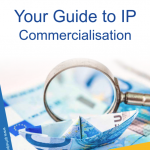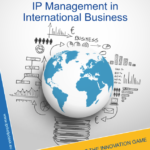From idea to prototype
With much easier access to lots and lots of EO data, now is the time to be developing innovative services for users in many sectors. Are you the next successful innovator that will turn an idea into a product or service? If that is the case, there are certain innovation aspects you should have already thought of, namely what would your solution offer to the market, if there is a market niche for it to settle in, and if the latter has not already been filled by the competition.
In this early stage of the innovation process, it is already necessary to consider the IP aspects and have a stable ground for your future IP strategy: intellectual property is a corner stone of maximising value and sustaining the innovation process. In the short term, you may already be interested in a patent search and freedom to operate, so that you are sure no other similar solution is on the market. You should also make sure to safeguard confidentiality, always taking precautions of what you reveal to potential collaborators or in front of potential investors. This will contribute to the value of your assets portfolio and help you develop a business strategy accordingly.
At this stage, it is also important to ensure that your innovation and its value proposition have the potential to stay apace with market trends and the evolving demand of your targeted users. By “keeping your ear to the ground” you will be able to stay aware of the most novel and cutting-edge innovations in the market and prevent the fruits of your labour from losing relevance.
TOP STORY

Market sizing
From prototype to market-ready service
So, you have your minimum viable product and are now on the verge of diving into the market. One, two, three… three…? Well, it is not as easy.
This is where solid business planning and market exploration are required. Developing a business model based on a unique value proposition in conjunction with a market analysis and/or competitive analysis helps in paving your way towards commercialisation and beyond. To make things work you will need to consider the IP aspects. Which assets are protectable and is protecting them with an IP right the way to go in every specific case? (e.g., patent vs trade secret). You will also need to consider the legal aspects of founding and running a company. While procedures vary among countries, many have encouraging conditions for young technical start-ups (such as favourable tax regimes, financing and even acceleration/incubation support schemes).
It is also very important to engage potential users in a “co-design” manner; they should provide you with the requirements and follow the development of your solution in an iterative approach. To incentivise this, you may want to consider favourable financial arrangements, such as offering your service for free over a period in return for the provided feedback. Finally, you will need to develop a robust network. Often the launch and success of a service involves more than one company. Make sure your supply chain is ready and that it is backed up with contractual agreements for all the stages, keeping in mind IP and confidentiality considerations. This is the case for providers, but also for outsourced services, such as marketing.
TOP STORY

IP goes to the market
From market-ready service to sustainably generating revenues
To ensure financial sustainability, a product or service should be made available in the market to paying customers. The commercialisation stage of the innovation process at times is referred to as the “valley of death” where organisations run out of resources and do not make it beyond the previous stage. Funding gaps may be one reason and need to be anticipated. Other reasons may lie in the solution itself: what worked in a laboratory environment or as a prototype may not be applicable to the conditions and needs of the (mass) market. During commercialisation, solutions need to prove that they are technologically and economically viable at scale. Unforeseen barriers may appear coming from e.g. (changes in) regulation, disruptions in the supply chain, or organisational and management issues.
While commercialisation may still require continuous improvements of the product or service as such, new skills need to come into the picture related to e.g. marketing, sales, or customer relations. Aspects such as legal, finance, organisation, human resources etc. need even more attention than during previous stages. The chosen business model will impact the management of assets, e.g. if licences are issued. Bridging possible funding gaps through external investors not only requires knowledge about options and approaches, but also implications on e.g. IP ownership. Finally, at this stage your solution will have appeared on the radar of your competition and therefore every effort previously made in protecting your IP and ensuring that you don’t infringe on third party’s IP will pay off now. Any sloppiness here may have severe consequences for your business.
TOP STORY

IP goes to the market
From a few paying customers to many
The Earth Observation sector is blossoming. Thanks to Copernicus’ free, full and open data but also the proliferation of private constellations, more and more solutions tackling challenges faced by actors in different sectors such as farmers, city authorities, shipping companies and so many others are being increasingly developed. The volumes of both public and private capital are continuously growing. Yet, very few companies manage to move from a few paying customers to many. Thus, scaling is a significant challenge faced by many solution providers in Europe. The most common barriers for sustained growth include access to finance and access to skilled labour. Furthermore, companies carrying out upstream activities experience long development cycles, capital-intensive operations and limited markets, which in turn create many business risks. Downstream companies face fewer barriers to entry but, instead, are confronted with the challenge of creating new markets for space-related data and services, whereby they are trying to sell to customers with little knowledge, interest or trust in space-based assets.
Maintaining a solid knowledge of the markets, devising a clear exploitation strategy for your IP assets and honing your investment readiness skills are therefore – alongside the challenges of operating a company – essential if you want to pursue scaling of your activities.





